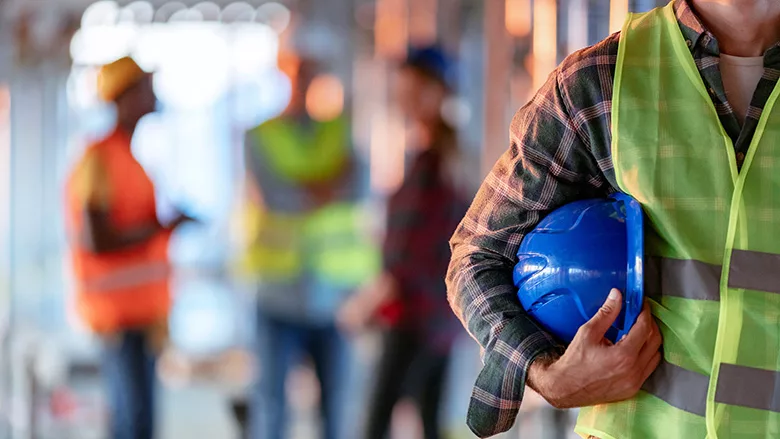5 Best Practices for Improving Restoration Worker Safety

Photo credit:ljubaphoto / E+ via Getty Images
While there is no industry today without some inherent hazards, there are several unique safety issues that restoration professionals must note at all times.
According to figures from the Bureau of Labor Statistics, up to 20% of the total deaths recorded among American workers occur in the construction industry, which includes restoration. With statistics like that, it's vital for construction businesses to have actionable information that can help to minimize these incidents. Below is a look at some best practices for improving workers’ safety. We’ll start by understanding the causative factors behind these safety incidents and then discuss how to improve the situation.
How Safety Incidents Happen
With better insights into how safety incidents occur, construction companies can take effective steps to decisively tackle them. For instance, OSHA has its Fatal Four, which mentions issues like workers being caught in or between equipment and objects, electrocutions, falls, and being struck by objects.
Other contributory factors include human error and negligence as well as unsafe work conditions. Furthermore, accidents may be the result of the improper use of tools and equipment, as well as a lack of appropriate protective gear.
Sometimes workers might decide to try new ways to solve a problem that can backfire. Other times, split-second distractions or trying to take a shortcut could lead to dire safety consequences.
While many elements contribute to creating a safe site, let’s take a look at just five of the best practices that can be implemented right away to get immediate results and improvements.
Frequent Training is Vital
With restoration workers regularly operating heavy machinery and complex electrical equipment, regular training is a prerequisite for safe operations.
From the minute workers get to a work site, they should be provided with clear work and safety instructions. Note that safety training is never one and done. Training needs to happen as often as possible. Doing this will empower new workers to be familiar with site safety operations and it will keep current staff updated as well.
To make frequent training easier to accomplish, training sessions don’t need to happen in any rigid or particular format - there are so many ways to conduct training sessions effectively. For example, the traditional daily toolbox talks are still an effective way of relaying health and safety instructions to the workforce. Also, it is recommended that a safety officer or manager is made available on site at all times; not only will a safety officer help to proactively detect and monitor hazardous situations, but their constant reminders and discussions with other workers will also help to keep safety top of mind always.
Adopt Proactive Equipment Maintenance
Adequate routine equipment maintenance is another factor that impacts workers’ safety on any construction site. A machine that is constantly kept in optimal running condition can help minimize the risk of operator injury or even a fatality.
Considering the often complex and hazardous nature of construction and restoration equipment, adopting adequate and regular equipment maintenance through the entire lifecycle of each piece of equipment can yield significant benefits for safer operations.
That said, several maintenance strategies exist to help restoration business owners decide on how best to approach equipment maintenance management.
Furthermore, having even a small team of maintenance technicians and mechanics on site will help as well — they are trained to anticipate potential problems and intervene before further damage occurs.
Provide Adequate Supervision
Regardless of the size of a project site, supervision plays a key role in preventing safety incidents. The supervisor’s active participation and guidance to workers can help to eliminate ambiguity or confusion among workers.
Essentially, in the course of executing their duties, a skilled supervisor can foresee potential issues and take action before an accident occurs.
Supervisors are also equipped with several tools and resources to help keep everyone safe. These resources include job safety analysis (JSA), permit to work (PTW), and standard operating procedures (SOPs), to mention just a few. They also work closely with safety officers to develop safety policies and enforce compliance with these policies. Supervision is therefore heavily involved in the running of a typical construction project and in particular in ensuring that health and safety is effectively implemented and managed.
Every site must have a firm, confident, and knowledgeable supervisor who is willing and capable of enforcing all safety standards with no exceptions.
Know the Standards and Enforce Them
Due to the high-risk nature of construction and restoration, several standards exist from different regulatory agencies to guide operations in this industry. These standards are in place to provide clear guidance for various topics - everything from safety standards to technical requirements for building projects, etc.
Workers are not necessarily expected to know every one of these standards by heart but in the context of safety, some of the most important ones that workers, supervisors and other stakeholders in restoration need to be at least familiar with include those from agencies like OSHA and the EPA. Everyone needs to know what is applicable and collaborate to ensure compliance. Again, restoration workers should note guidelines like this one from the EPA that specifically address issues like working safely with lead and paint.
Deploy Technology
Arguably, if not for new innovations in construction technology that are helping to minimize fatalities and injuries on site, accident rates in construction would be much higher than it is today.
It’s advisable for companies to research what's available and then adopt those that fit into their unique work culture. Here are a few examples of technologies that are being used to improve workers safety:
Wearables in the form of smartwatches are available that monitor a worker’s vital signs in real-time. These devices will monitor the wearer’s heart rate, respiration levels, and skin temperature.
Workers can be fitted with smart helmets. These helmets can detect anomalies like impact, free falls, excessive temperature, and more. The helmets can be programmed to protect wearers even more by emitting a warning sound to warn the wearer if they move too close to hazards.
The data collected from each wearable whether a smartwatch, helmet, jacket, etc, can be accessed through a mobile application in real-time, thus a supervisor at a remote location can keep a watchful eye on every worker at the site. These devices can also help to track a worker’s movement, pinpoint their location on a large construction site, monitor their posture, and determine whether they are intoxicated, distressed, or suffering from fatigue. These insights are valuable to help spot a potential hazard before it becomes an accident.
As the popular saying goes “safety is everybody’s responsibility.” The fact that one person’s actions or inactions can affect many other people on a construction site makes it mandatory that restoration businesses take a holistic approach to implementing and enforcing safety regulations.
With the above information, restoration businesses can keep safety at the top of everybody’s mental checklist, no matter what their job description may be.
Looking for a reprint of this article?
From high-res PDFs to custom plaques, order your copy today!








